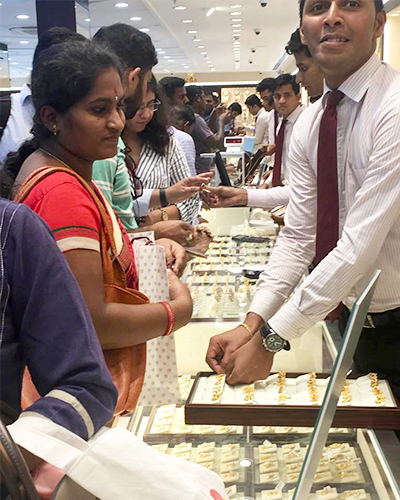Akshaya Tritiya is one of the most auspicious occasions in Hindu religion. The word Akshaya means ‘Eternal’ and Akshaya Tritiya is thus considered an auspicious day for, among other things, starting a business, buying a property or making an investment. Buying gold on Akshaya Tritiya is believed to bring good fortune and prosperity. On the day itself, there is even a specific time period which is seen as auspicious for buying gold – the shubh muhurat.
Gold shines brighter on Akshaya Tritiya
9 May, 2019
Lower prices helped unlock pent-up demand. Akshaya Tritiya fell on 7 May this year, and early reports are that gold demand was robust. The local gold price (for 995 fineness) on the morning of Akshaya Tritiya was Rs 31,600/10g, marginally higher than last year’s price of Rs 31,300/10g, but, significantly, Rs 2000/10g lower than the heady peaks witnessed in February this year. Such a price correction ahead of this key gold-buying festival supported demand on the day: consumers who were waiting on the side-lines for the price correction were rewarded.
Based on my interactions with contacts across the gold value chain, this Akshaya Tritiya has been one of the best in recent years, and points towards healthy gold jewellery demand in 2019. Talking with the trade, certain themes emerged during the festival:
• South Indian demand in robust health: Gold demand remained robust in South India, particularly in the in states of Kerala and Karnataka. Demand in other regions was also healthy on the day: the higher number of wedding days and lower price level supported demand across the nation.
• Light-weight jewellery and coins see good traction as well as bridal jewellery: Given the auspiciousness of the day, consumers often choose to purchase buy bridal jewellery for the ongoing wedding season, hoping for long and prosperous marriages. This year was no exception, particularly as retailers launched new collections, timed to coincide with the festival. And this year, consumers also showed a keen interest in light-weight jewellery (gold earrings, pendants, bangles) and coins. Gold jewellery has faced growing competition from other retail sectors keen to make the most of the AT opportunity by offering promotions and discounts. Automobiles were a notable example, and this greater competition for consumers’ disposable income encouraged some to choose lighter weight jewellery pieces.
• Increasing sales channelled through India’s nascent digital marketplace: Digital platforms such as SafeGold, PhonePe, Paytm Gold and Google Pay captured a growing portion of gold purchases. Online jewellery stores such as CaratLane and Melorra Jewellery also caught the attention of urban consumers, who favoured the convenience.
Commenting on Akshaya Tritiya sales, Tanishq senior vice-president for sales & marketing Sandeep Kulhalli said that “There has been a significant increase in demand for gold jewellery compared to gold coins. Since the wedding season is on, we are expecting an increase in footfall at all our stores.”2
[1] The World Gold Council and its affiliates are affiliated with SafeGold.


